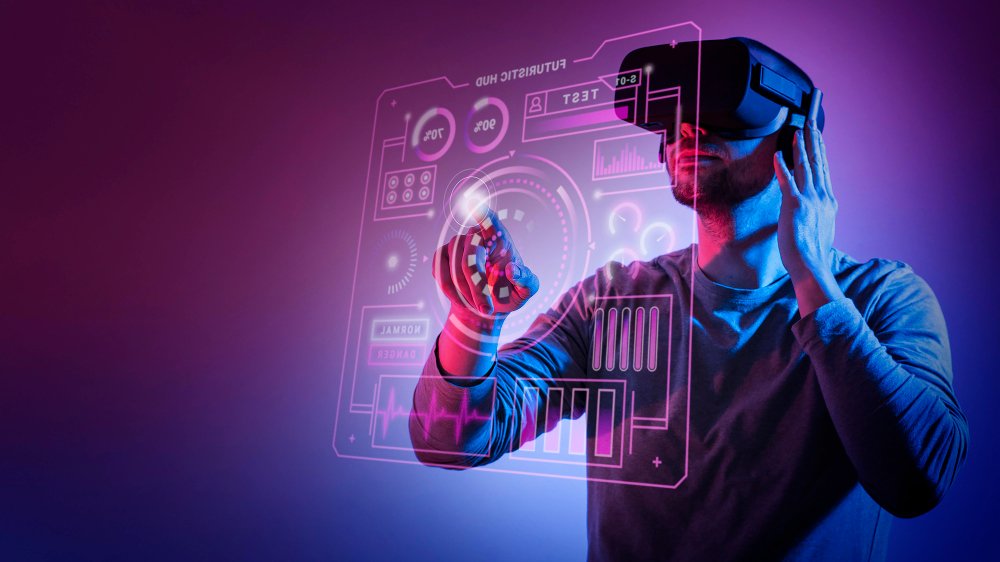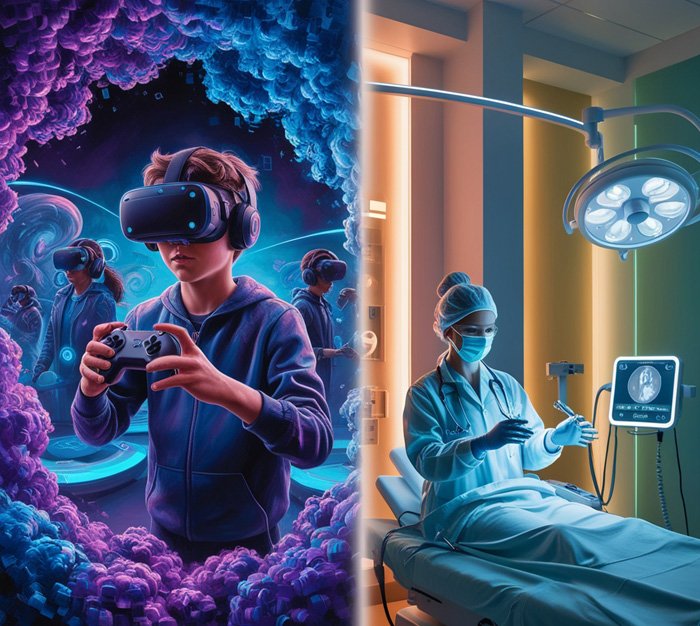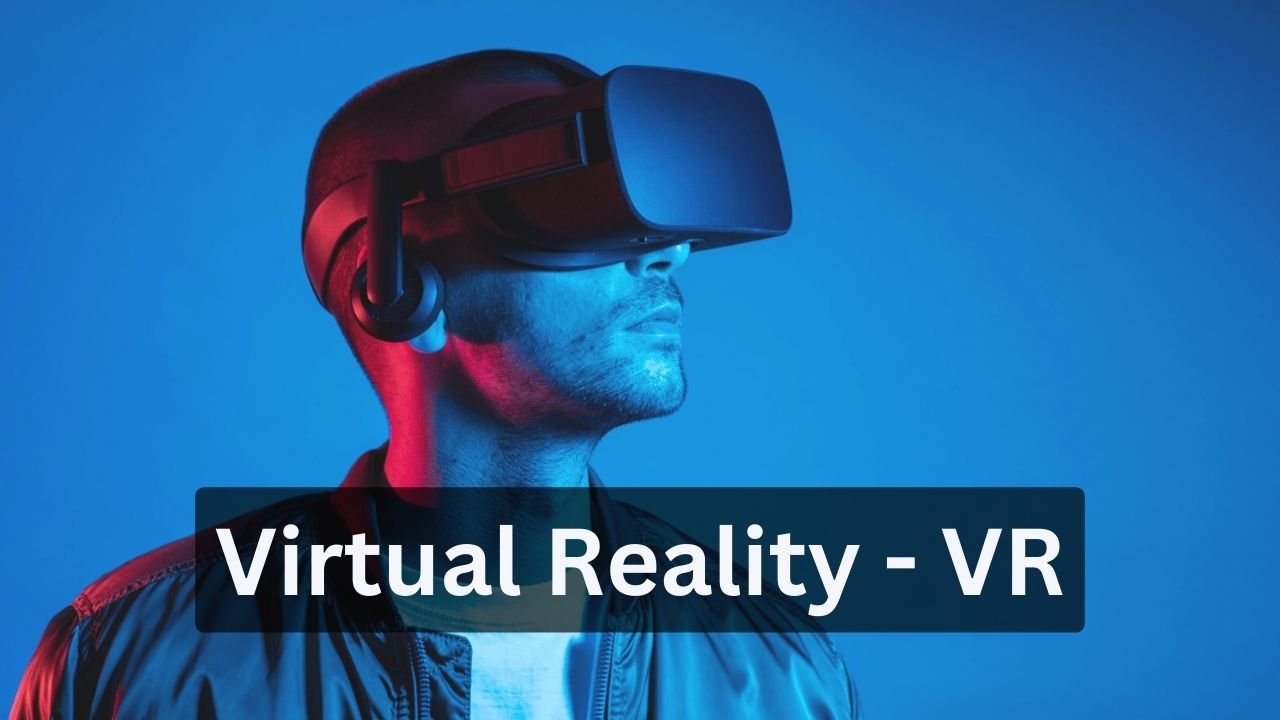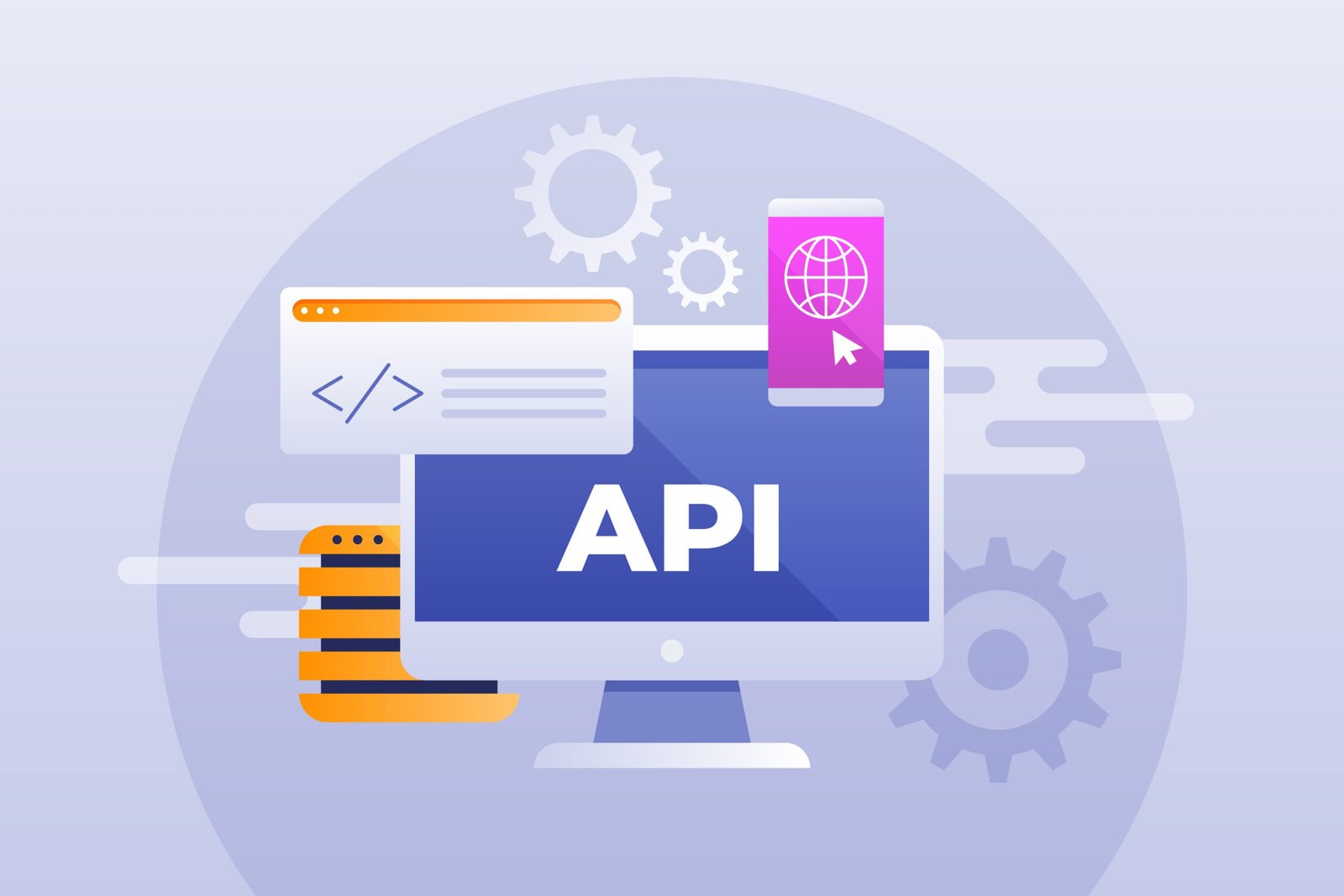The revolutionary technology known as virtual reality (VR) transports users into a simulated setting and provides experiences beyond the confines of the real world. Virtual reality (VR) generates a sensation of presence through the use of cutting-edge hardware and software, enabling users to interact with and move around virtual spaces. Numerous industries, including gambling, education, healthcare, real estate, and more, will be significantly impacted by this technology. To fully appreciate virtual reality (VR) and its implications for our lives and society, one must know its underlying concepts, history, uses, and prospects.
Background Information in History Initial Thoughts and Developments
Virtual reality has been around for a few decades, but early attempts to create immersive experiences were made before modern digital technologies. The Sensorama, a multimedia gadget created by Morton Heilig in, is among the first instances.
In The 1980s and 1990s
VR technology made tremendous strides in the 1980s and 1990s. Jaron Lanier established VPL Research in 1985 and is frequently credited with popularizing the phrase “virtual reality.” Some of the earliest VR devices, such as the DataGlove and the EyePhone, were created by VPL Research and enabled users to interact with virtual surroundings through head tracking and hand movements.
Virtual reality (VR) became more popular in the entertainment industry and academia during the 1990s. With products like the Sega VR and the Virtual Boy, Sega and Nintendo tried to enter the consumer VR market, but their early attempts were not financially successful. Despite these obstacles, the foundation for contemporary VR technology was being laid.
The 2000s to Present
The comeback of virtual reality technology in the 2000s was fueled by advances in display, graphics, and computer power. Interest in virtual reality was rekindled in 2012 when Palmer Luckey developed the Oculus Rift. The successful Kickstarter campaign for the Oculus Rift and its subsequent acquisition by Facebook in 2014 were crucial turning points in the adoption of VR by the general public.
Since then, a large number of businesses have created VR headsets and platforms, such as HTC, Sony, and Valve. This has resulted in a rapidly expanding ecosystem of devices, software, and apps. With a vast array of experiences and uses, virtual reality (VR) is now more advanced and accessible than before.
How It Works VR Technology

- Important Elements
- The head-mounted display, or HMD, is the most important part of virtual reality systems. It is comprised of a headset with stereoscopic picture screens that give the appearance of depth. Additionally, the head tracking sensors in the HMD enable the virtual environment to adjust in response to the user’s motions.
- Tracking Systems: VR systems track the user’s position and movements in real-time using a variety of tracking technologies. These consist of camera-based tracking, inside-out tracking—where sensors are integrated into the headset—and external sensors, including lighthouses.
- Input Devices: Users can interact with the virtual environment with the use of input devices such as gloves, controllers, and hand-tracking systems. Through the detection of gestures, movements, and orders, these gadgets offer a more interactive and immersive experience.
- Software and Applications: VR experiences are powered by sophisticated software that renders 3D environments, simulates physics, and processes user interactions. VR applications range from games and simulations to educational tools and virtual tours.
System type of VR Technology

- PC-Based VR: To run VR apps, PC-based VR systems like the Oculus Rift and HTC Vive need a capable computer. These systems are perfect for professional use, gaming, and simulations since they provide excellent performance and visuals.
- Standalone VR: VR headsets that operate independently of a PC or external sensors include the Oculus Quest. Their integrated tracking systems, processors, and storage make VR more portable and practical. While standalone VR systems might not be as performant as PC-based systems, they are more easily accessible.
- Mobile VR: Smartphones serve as the display and processing unit in mobile VR devices like the Samsung Gear VR and Google Cardboard. In comparison to PC-based and more expensive systems, these systems are more accessible and affordable, but their performance and capabilities are standalone VR.
- Console VR: PlayStation VR and other console VR systems are made to be compatible with game consoles. Console gamers may enjoy a rich virtual reality experience with these devices, which strike a mix between performance and accessibility.
Applications of Virtual Reality

Gaming and Entertainment
One of the most well-known and widely used VR applications is gaming. Virtual reality (VR) gaming provides engaging and immersive experiences, enabling users to enter virtual environments and engage with them in ways that are not possible with traditional gaming. Video games such as “Beat Saber,” “Half-Life: Alyx,” and “The Elder Scrolls V: Skyrim VR” have shown how VR can completely transform the video game business.
VR is revolutionizing the entertainment industry more broadly than just gaming. Virtual performances, films, and theme park attractions offer audiences new forms of entertainment. Through VR, consumers may take an active role in the experience instead of just being spectators, which increases enjoyment and engagement.
Education and Training
Virtual reality holds great promise for training and education, providing immersive and interactive learning environments. VR is being used by businesses and educational institutions to construct virtual labs, field excursions, and classrooms. For instance, from the comfort of their classroom, students can virtually examine objects, visit the surface of Mars, or explore historical locations.
VR simulations are used in professional training to offer practical experience in a secure setting. Pilots can train in flight simulators, medical students can do surgical simulations, and industrial personnel can learn how to operate machines. By providing repeated and realistic experiences, virtual reality training minimizes risks, decreases expenses, and enhances learning results.
Healthcare
VR is transforming healthcare by offering cutting-edge options for training, diagnosis, and therapy. VR helps surgeons plan and practice difficult surgeries, which enhances accuracy and results. Virtual reality (VR) can help with remote consultations as well, enabling experts to work together and offer advice from various places.
VR is utilized in mental health for both therapy and recovery. Virtual reality (VR) environments can be created to assist patients in confronting and managing disorders including PTSD, anxiety, and phobias. For example, VR exposure treatment helps patients develop coping skills by progressively exposing them to frightening stimuli in a safe environment.
Real Estate and Architecture
VR’s ability to improve planning and visualization is revolutionizing the real estate and architectural sectors. Potential buyers can inspect homes without physically seeing them thanks to virtual reality tours created by real estate brokers using VR. This offers a more thorough picture of the property and saves time.
With VR, designers, and architects may construct virtual representations of structures and interiors. Before the start of construction, clients can navigate through these virtual spaces, offering input and making modifications. This guarantees that the finished product fulfills customer expectations, enhances communication, and lowers errors.
Tourism and Travel
Virtual reality is revolutionizing the travel and tourism sector by providing virtual experiences and tours. Travelers can use virtual reality to explore locations, sites, and attractions before booking their trip. This increases their anticipation for their travels and aids in their decision-making.
For people who are unable to travel because of medical issues, economic restraints, or other reasons, virtual reality offers an additional option. Users of virtual travel experiences can visit distant locations, engage with diverse cultures, and discover novel environments all from the comfort of their own homes.
Retail and E-Commerce
VR is being used by the retail sector to improve the shopping experience. Before making a purchase, shoppers can see products in a virtual setting thanks to VR applications. Retailers of furniture, for instance, have VR applications that let customers view how goods would appear in their homes.
Customers can digitally try on clothing and accessories in the fashion industry thanks to virtual fitting rooms. Customers may make better selections and have a better shopping experience thanks to this technology, which also lowers returns. Virtual reality is also employed in marketing campaigns, where immersive and interactive ads draw in viewers and encourage interaction.
Military and Defense
VR technology was first used by the military, which uses it for operations, training, and simulation. With the help of realistic combat simulations offered by virtual reality, soldiers can rehearse tactics and techniques in a secure setting. This raises readiness and lowers the dangers of in-person training sessions.
VR is also utilized during mission rehearsal and preparation. To practice movements and coordinate activities, commanders might develop virtual battlefields and scenarios. In real-world operations, this improves situational awareness and decision-making.
Challenges and Limitations
Technical Challenges
- gear Restrictions: VR gear still has issues with weight, comfort, and short battery life despite tremendous progress. For extended usage to be comfortable, head-mounted displays must become lighter and more ergonomic.
- Motion Sickness: When utilizing virtual reality, some users report feeling uneasy or motion sick, especially after extended sessions. A mismatch between vestibular and visual cues frequently causes this. These problems can be lessened by increasing motion tracking, decreasing latency, and increasing refresh rate.
- Processing Power: To manage real-time data and create intricate images, VR apps need a significant amount of processing power. It’s still difficult to guarantee seamless operation on mobile devices and stand-alone headsets.
Development Challenges
Content Creation: Producing VR content of a high caliber demands a significant investment of resources and specialist knowledge. It might take a lot of time and money to create precise 3D models, animations, and interactive features.
Standardization: The absence of common platforms and tools in the VR sector causes fragmentation. Because developers frequently have to design unique solutions for various hardware and operating systems, interoperability is limited and complexity is increased.
User Experience Challenges
- User Interface: It’s critical to provide user-friendly and intuitive interfaces for VR applications. Conventional 2D interfaces don’t work well in 3D settings, necessitating novel methods of navigation and interaction.
- Accessibility: It’s a constant struggle to make VR experiences usable for everyone, including people with impairments. Creating assistive technologies and inclusive design techniques is crucial to achieving universal VR accessibility.
Future Prospects
Technological Advancements
- Virtual reality has a bright future ahead of it, with continued developments positioned to solve existing constraints and open up new possibilities. Important areas of growth consist of:
- Better Hardware: VR gear in the future will be more energy-efficient, lighter, and more comfortable. More discrete and wearable VR headsets and contact lenses will be produced as a result of advancements in materials science and downsizing.
- Enhanced Processing Power: More sophisticated and lifelike VR experiences will be made possible by the integration of processors and graphics cards with greater power. 5G and edge computing will improve VR applications’ responsiveness and performance even more.
- AI and Machine Learning: These two technologies will be essential to the development of Virtual Reality. VR experiences can become more smooth and intuitive with the help of AI algorithms, which can enhance object detection, tracking, and interaction.
Read More: Top 5 Best Budget Headphones in 2024
Societal Impact
- The following are some important societal ramifications of VR’s broad adoption:
- Education and Workforce Development: By offering immersive and interactive learning environments, virtual reality will revolutionize both education and workforce development. Professionals and students will have access to practical instruction and simulations to advance their knowledge and abilities.
- Inclusivity and Accessibility: Virtual reality (VR) holds promise for enhancing accessibility for those with disabilities. Virtual reality applications can offer real-time translations, visual aids, and navigation support, hence promoting inclusivity and accessibility in the world.
- VR has the potential to be extremely helpful in protecting and promoting cultural assets. People can explore and learn about other cultures and history through immersive educational experiences made possible by virtual reconstructions of historical sites and artifacts.
VR is a game-changing technology that provides engaging and interactive experiences in several fields. Virtual reality (VR) has advanced our ability to interact with the digital environment significantly, from its inception to its present applications. Virtual reality has a bright future ahead of it, full of opportunities for innovation and breakthroughs despite obstacles and constraints.
Virtual reality (VR) technology is going to change the way we work, learn, play, and engage with the outside world. We can unlock a future where digital and physical realities coexist harmoniously, enhancing our experiences and broadening our horizons, by embracing virtual reality and tackling its problems.



